Lesotho: Its Sustainable Food Future
.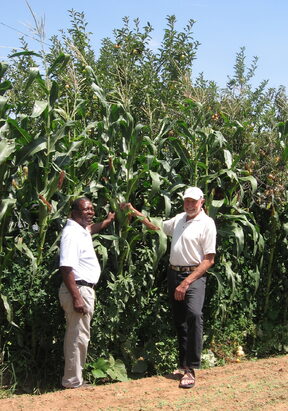
Lesotho: My Return to Maseru
By Clark Tibbits
Having just flown into Johannesburg, South Africa, from Tampa, Florida, I did indeed relish my late evening hotel snack of tomato and avocado on toast with a Hunters Dry Hard Cider. The sandwich was fresh and delicious, especially compared to the flavorless airplane meals. Airlines apparently assume that vegans-- yes, I am one of those--eschew herbs or sauces or flavorings of any kind, in addition to animal products.
On my second day, we travel by car from Joburg to Maseru, the capitol of Lesotho, a small mountainous country surrounded by South Africa. The hotel provided a large, complimentary English breakfast buffet from which I enjoyed fresh fruit (delivered daily by a cheery fellow with a spotless white van), white beans in tomato sauce, and cracked wheat bread with marmalade. Overlooked by a huge, sad-eyed water buffalo mounted on the wall behind where I ate, I was glad there was no meat on my plate.
The bread was hearty and exceptionally good. I had read recently a study that cited bread as the top contributor to excessive sodium intake in the US. ( Eight of the next nine top sources were various meat and/or dairy products.) The top ten sources together accounted for 40% of all sodium consumption. Frankly, I thought bread, a staple for me, got a bum rap in the headline.
My two Basotho friends and I stopped for lunch at a plaza along the highway. Joking about that terrible “American” influence, they shunned a wide variety of burgers on the menu and had fried chicken and chips instead. My lunch was a banana and bran muffin pilfered from the breakfast buffet, along with a bottle of passion fruit juice.
( Basotho, incidentally, refers to a cluster of tribes united in the early 1800’s, that comprises two major groups of people, one in Lesotho, and one in South Africa.)
A broad, rosy sunset welcomed us as we crossed the border. We arrived in Maseru too late for supper, but it rained off and on throughout the night-- a good omen in a country whose motto is Khotso, Pula, Nala (Peace, Rain and Prosperity).
On my first full day in Lesotho, my host family slept in, so I sliced an apple, also from the hotel buffet, and dipped it in almond butter, the only food I brought from home. Later, when my host had coffee with cinnamon powder, I enjoyed a bowl of their granola with mango and litchi juice on it.
The ubiquitous Mrs. Ball's
The lunch they provided featured lightly sauteed finely chopped cabbage and carrots served with pasta and diced beets. It was a tasty combination, especially when augmented by Mrs. Ball’s Chutney, an iconic South African product that can sometimes be found in US stores.
A couple of hours later, after a short nap and some planning work, I was given a tour of Kingsway, the main street of Maseru. Many beautifully designed, sandstone civic buildings and small retail complexes have gone up since I was last here in 2006. Even the bus stop area, jammed with hundreds of tiny tin-covered stalls, looked more organized than I remembered.
The biggest surprise, however, was that a new, two story shopping center with an glass elevator and escalator was financed by a Basotho investment group that includes a man I know, the former Ambassador to the US. This financial first is significant because most older shopping centers were built with South African or Chinese money.
Inside the center, I explored the well-stocked Pick ‘n Pay supermarket. My list consisted of food items familiar from a dozen previous visits to Lesotho---Mrs. Ball’s, a thin multigrain cracker called Pro Vita, muesli with pumpkin seeds, apples from the Eastern Cape, and a local marmalade. To that I added organic bananas and two brands of soy milk. Not that long ago, the only source I had for soy products was the back door of a Chinese restaurant.
Prices seemed comparable to those for similar products in the US. Although most Basotho people really cannot afford the supermarket, the aisles were packed with shoppers on a Saturday afternoon. I expect that prices will be lower at the multitude of stalls in the market area which draws a large crowd everyday.
"Papa and moroho"
That evening my supper was "papa and moroho." This dish is by far the most popular of all Basotho foods, and is eaten in rural villages and the capital city by rich and poor alike.
By the next day, Sunday, my personal daily diet in Lesotho was now established. For the rest of my stay, my core food will probably be muesli with banana and soy milk in the morning and some variation of "papa and moroho" for most other meals of the day. I will snack on apples and Pro Vita crackers with almond butter and drink a South African hard cider in the late afternoon or evening. Oddly, this will not be a boring diet for me. I am fine with simplicity, and local specialties.
"Papa and moroho" surely are these. "Papa" is a finely ground cornmeal cooked in water to the consistency of firm porridge or stiff mashed potatoes. It seems more flavorful than rice to me. ( Don’t forget, I was a Peace Corps volunteer in Lesotho, back in the day! ) The knack of getting the consistency right is inborn in all Basotho and cannot be mastered by outsiders, or so it seems. When I have tried to cook "papa," it quickly has become a comedy show for local onlookers.
"Moroho" is a Sesotho word ( the language of Lesotho,) for the amaranth plant, but encompasses any and all edible greens, both cultivated and growing wild. My host family’s garden contains both amaranth and swiss chard. There may be other greens there as well. The "moroho" I had was stir-fried with onions and green peppers and seasoned with some kind of chilies. It was savory and good, but a bit too salty for me.
Yesterday I confirmed that lambs quarters, a weed that grows abundantly along the roadsides both here and in the US also is used as "moroho." I consider it to be the queen of the gardens I tend in Michigan and North Carolina because of its highly nutritious leaves and abundance of seed. My garden king, on the other hand, is comfrey because it is perennial and has a deep, strong tap root. Comfrey, alas, cannot be eaten as "moroho" because it is difficult for humans to digest, though it has medicinal uses, and is an excellent feed additive for animals. I use its mineral-rich leaves as a mulch with which to fertilize other plants.
Corn? Not always. It used to be sorghum.
On my fifth day in country, a rainy Monday, I begin to explore the history of "papa" and other grain foods eaten in Lesotho. Most people I meet here believe that Basotho have always eaten "papa," but corn or maize is an American food, introduced to Africa by Westerners in the 16th century. It was first planted on this continent as an easy food to feed slaves being transported in ships from West Africa to the Americas. White South African farmers introduced corn many years ago here as a more energy intensive and inexpensive food for laborers.
The traditional grain of Lesotho was actually sorghum. Sorghum is still used in Lesotho as a breakfast porridge and as a thick, fermented breakfast drink. I had a glass this morning, sweetened with a little sugar. It has a satisfying flavor and texture that I have decided to learn to appreciate because it is always available in the house where I am staying. Sorghum is also used to make a grainy, potent, popular home-brew. That’s one I decided long ago I would not learn to appreciate.
 The other grain grown in small amounts up in the mountains is wheat. Most village homes do not have stoves for baking bread but they do make scrumptious steam breads and fried breads over open fires. Even when people move from the villages into the big city of Maseru, they continue to make stovetop breads. I am pleased to learn that we are having some for supper tonight.
The other grain grown in small amounts up in the mountains is wheat. Most village homes do not have stoves for baking bread but they do make scrumptious steam breads and fried breads over open fires. Even when people move from the villages into the big city of Maseru, they continue to make stovetop breads. I am pleased to learn that we are having some for supper tonight.
Of Mice, Men, and Other Meat---The Name of the Game is "Nama"
Their distant ancestors, however, ate each other when that was necessary to survive. The founder of Lesotho, King Moshoeshoe, lost his grandfather to cannibalism. ( James Jacob Machobane, founder of the Machobane Agricultural Development Foundation, describes those times in one of his early novels, “In the Dark Caves.” ) He named his agricultural college, Mantsa Tlala, (Drive out Hunger,) in part because of his own experience as a child, stealing food scraps from his school’s pigs to ward off hunger.
It is ironic that Basotho so love their “nama,” and yet most are forced by economic circumstances to eat a mainly vegetarian diet. In rural villages and towns where three quarters of Basotho live, meat is eaten rarely and usually in small amounts as a special treat. Chicken is eaten primarily on Sundays. Cattle and goats are slaughtered to mark special occasions like weddings and funerals, and are shared with the whole community. Rural Basotho value their “nama” because it is associated with good times and festivals.
Most urban Basotho come from this meat-loving tradition. Moving to the city just means that they might have enough money to eat red meat every day, at risk to their health. The Harvard School of Public Health recently reported a direct link between meat consumption and diabetes, as well as heart disease. Both diseases are serious problems in Lesotho, and getting worse with increasing urbanization.
Soon my host family will journey up to a remote corner of the country to attend an uncle’s funeral. Funerals are major social events in Lesotho and require a three day weekend to do properly. Friday is for traveling and cooking, Saturday is the funeral service, burial and celebration, and Sunday is for recovering from the celebration and returning home.
Once the funeral gets underway, ancestral forms of worship will prevail, even though about half the population is Catholic, with Evangelicals on the rise. Thus, custom requires the slaughter of a cow to accompany the deceased to the after life, and the killing of at least one sheep ensures the deceased will be welcomed at the end of that journey. ( The slaughtered cow’s hide was traditionally used to wrap the body, but now it is most commonly used to cover the casket. )
The meat from both animals is eaten at the funeral celebration with any leftovers given to those who helped cook. Although meat is the featured food, large quantities of “papa” made from corn are also cooked in black three-legged iron pots over open fires. Anyone who wants to attend is offered food. Later, buckets and buckets of potent sorghum home brew are served inbowls that pass from hand to hand.
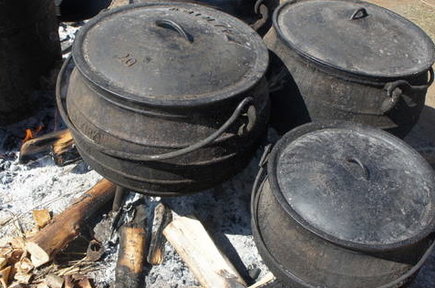
Similar feasts are prepared to commemorate other significant life events. At weddings, husband and wife traditionally share a sheep’s rib. A newborn child is welcomed into the world with the slaughter of a sheep or chicken. At feasts held to change one’s luck, a white chicken must be sacrificed and eaten. Music, dancing and ululating/trilling by women are common at all celebrations. These customs are followed by all, whether rural or urban Basotho, paupers or PhDs.
Inappropriate Corn, Versatile Potatoes
The rains have not been plentiful here in Lesotho, until I arrived a week ago. As has occurred many times over the past centuries, late rains, and depleted, eroded lands have resulted in widespread hunger and starvation here. This growing season looks like yet another of those times.
One reason for this is that corn, a crop introduced from the Americas, is the grain crop of choice, grown everywhere in Lesotho, on city lots as well as in rural fields. Because it requires nitrogen-rich soils and is not drought resistant, corn has become a great threat to local food security. It has become dominant over the native sorghum, a far more nutritious plant that thrives in poor soils with little fertilizer, and little water.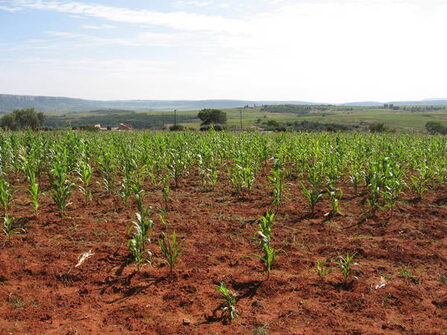
Corn planted as a mono-crop struggles in the parched Lesotho environment
The mission of the Machobane Agricultural Development Foundation I helped to start 20 years ago, and have come back to advise, is increasing food security and health by promoting a farming system developed by James Jacob Machobane.
A well known author in Lesotho, Machobane introduced potatoes to the country over 50 years ago as a survival crop to be eaten in years of little rain, when the corn crop fails. Mister Potato, as he was known then, also advocated the intercropping of corn with other food plants like sorghum, beans, squash and greens, so that people could eat a healthy range of food from the field throughout the entire year. His innovative techniques for maintaining soil fertility relied exclusively on locally-available manure and wood ash. Today over 2500 village farmers benefit from the use of some variation of the Machobane farming system. 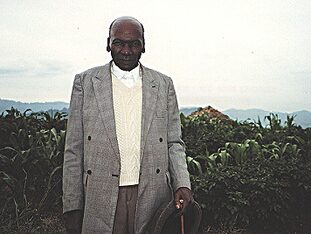 James Machobane
James Machobane
Still, too many other Basotho farmers continue to gamble with a corn mono crop that is highly dependent on costly chemical fertilizers and good rains, possibly because they are stuck rigidly following local tradition. Once an irrational system is in place for a long time, it is hard to reach people with different ideas and rational analysis.
With strong traditions rooted in animal slaughter, it is unlikely that many Basotho will ever become vegetarians. One time, however, when I brought James Machobane a gift of South Africa's Black Cat brand peanut butter, he said that if he had known of such wonderful protein food when he was younger, he would not have eaten animals! 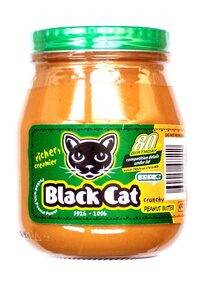
Maybe, as younger people begin to grasp the benefits of a wider ranging, vegetable-rich diet, a Holy Cow brand of textured soy will someday be served at Basotho funerals, along with slaughtered sheep...
Organic Veggies on the Rise
Walking through the multitude of market stalls around the bus station in Lesotho’s capital, Maseru, one day, I was impressed by the array of fruits and vegetables on display. Peaches are especially plentiful right now, as the trees spring up naturally, grow well, and are everywhere. Peaches can be bought in large quantities from the market stalls or, remarkably, picked for free from trees growing along the roadsides.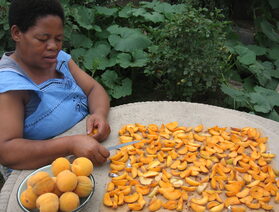
But the town’s showcase of produce is City Fruit and Veg, in the heart of the downtown. The aisles are lined with showy colorful foods, and the place even features bulk dispensers for nuts and grains, similar to those in US health food stores. City’s signs are as bold and fun as the cornucopia it sells, but nothing here is organic, and little, if any of City’s produce is purchased from local Basotho growers. I was deflated to learn this. It was like hoping your mother had baked that beautiful birthday cake she put in front of you, and finding out it came from the toy department at Walmart.
Fortunately, my mood was to brighten when I drove out of town one Sunday in search of a former colleague from 45 years ago. Though he was not there, I did find his oldest son, Setsabi Setsabi, a lecturer at the nearby National University. Just a year ago, he had finished construction of a fine house on a large suburban plot of almost an acre. In the disturbed soils around the new house, he has created one of the finest, first-year vegetable gardens I have ever seen.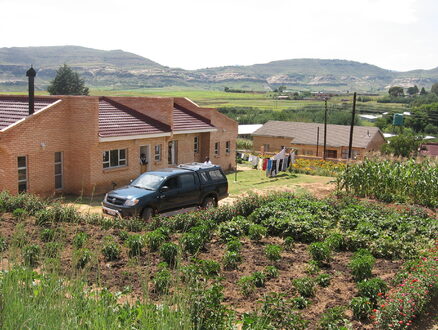
Though he told me he knew of Machobane, and even had met the great old man once, he had not studied his farming system. Nevertheless, there before me were Machobane’s concepts on a homestead rather than field scale. The inter-cropped vegetables were there---corn with beans and squash, peppers with cabbage, beets and carrots tightly packed between rows of greens--- and plants rotated in and out with the seasons. Marigolds, zinnias and chive borders popped up throughout the garden to attract beneficial insects and discourage others. Strawberries were planted on the high sloped sides of beds for ease of weeding and picking.
The entire, totally organic garden was developed by this young man in his 40’s working hard, relying on his intuition and a willingness to experiment. He has built up the soil with composted plant residue and manure from a police station animal compound. And he has documented in photos each stage of the garden’s development. As I looked through the images, I realized that Setsabi was the Basotho gardener I had been looking for to help the Machobane Foundation promote small-scale homesteading, known in the US as urban gardening.
Just minutes from Setsabi’s place I toured a second great garden at the home of another old colleague from the 1960s, Ntate Lelala. Lelala has a smaller, more mature plot of a half acre around his house. It includes a variety of fruits--applies, apricots, peaches, watermelon--as well as intensively planted vegetables. His corn, like that of Setsabi, towers above our heads and is heavy with thick, mature cobs. And again, everything is organic, relying in his case more on compost and less on manure.
A Food Future for Lesotho
On that Sunday morning I felt I was seeing a future for food in Lesotho. I could imagine gardens like these throughout the country. Unlike the unfenced fields that are located outside villages and towns, the homestead garden is protected from stray animals, water is available from the house tap, and someone in the family is usually at home to keep an eye on the plants.
Not everyone is cut out to grow food, but just two or three gardens like those of Setsabi and Lelala could feed a small neighborhood or village. Lelala, who sells his produce locally, estimates that his half acre plot could provide 10 neighbor families with all the fruits and vegetables they purchase in a year, with no transport or middle man costs. The produce is fresh, safe, healthy and grown next door.
A few days later I brought the managing director of the Machobane Foundation out to see these gardens, and immediately he agreed to invite Setsabi not only to serve on the Board of Directors, but also to lead the Foundation’s new homestead program.
Traditions Will Support Sustainable Future
Although I have been critical of some of Basotho food traditions, mainly the reliance on corn mono crops and red meat diets, other traditions strongly support a flourishing food future. One is an agrarian tradition. Most Basotho, even those in Maseru, have strong roots in their villages. They are at most just one or two generation from a farming way of life, and they carry that tradition with them to the city and towns.
Another is an egalitarian tradition. Lesotho is the only country I know of in the world where all the land is communally held and cannot be purchased by individuals or companies. Everyone is offered a free home site in a village and a field in which to grow their crops. The allocation system is administered by chiefs working with village councils. While it is not without abuses, and 99 year leases are now offered to attract business investment and development in the city, in principle it still works, and in actual practice works pretty well.
Common ownership of the land helps to mitigate the tendency toward income inequality that I have seen in other developing countries, as well as in the US, where such is now quite extreme. When my wife and I first came here as Peace Corps volunteers and Lesotho was officially the third poorest country in the world, we did not see the abject poverty that plagues other poor countries, places where average people have no access to land.
The extended family network is strong here as well. A family member with a good job or a good harvest is expected to share with aunts and uncles as well as with parents, and with nephews and nieces. In fact, older relatives are called “my father” and “my mother,” and cousins are called “my brother” and “my sister.” All related children are called “my son” or “my daughter.” Even non-related friends are often treated as family, and addressed in this way.
As more and more Basotho move to the city and towns, these lifesaving traditions are weakening, however. For the future of food in Lesotho to be as bright as it can be, young people must be encouraged to stay in rural areas and see farming the fields as a viable livelihood and honorable profession. Yet if they choose to come to urban areas, they can still learn the practice of homestead gardening, both as a way of feeding themselves and their families, and as a way of supplementing small incomes. This continues to be the mission and the work of the Machobane Agriculture Development Foundation.
Thanks for making this Lesotho food journey with me.
© Clark Tibbits
Organically Viable in Lesotho
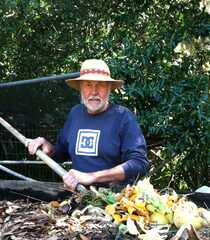
Clark Tibbits, former Peace Corps Volunteer in Lesotho and currently a consultant, explains the Machobane approach.
The Machobane Agricultural Development Foundation was founded in 1997 to promote the farming and educational innovations developed in Lesotho, Africa by Dr. James J. Machobane.
In the 1940s when Dr. Machobane was already a well known author of the first historical novels written in Sesotho, he returned to his home village in Leribe district to begin 13 years of agricultural experimentation and research. His goal was to “drive out hunger” from his country.
Among the many agricultural practices he developed during this time were the intercropping of traditional maize fields with potatoes and other vegetables, an intensive rotational system that produced food crops and field cover throughout the year, and the concentration of locally available manure and ash in planting beds rather than scattering them across the entire field.
To help spread these innovations throughout the country, Dr. Machobane required each of the village farmers he trained to in turn train twenty others. This educational approach evolved into the Mantsa Tlala (Drive Out Hunger) College with a curriculum designed to improve all aspects of village life.
In 1959 Dr. Machobane’s successes with this comprehensive approach to village education came to the attention of the Ford Foundation and resulted in his recognition as Volunteer of the Year 1961 for the Continent of Africa and a sponsored speaking tour in the United States. 
During the years leading to Lesotho independence in 1966, the international recognition of Dr. Machobane’s work began to be perceived as a threat to the country’s new political leadership, the college was closed, and he was forced to give up publicly promoting his ideas. For almost 25 years he lived “underground”, able to express himself only by authoring unpublished manuscripts on topics ranging from agriculture to history and poetry to football.
After a coup in 1986 Dr. Machobane was able to “arise from the grave”. In field trials supervised by the Lesotho Department of Agriculture the productivity of his low input rotational system compared very favorablywith the petrochemical dependent “green revolution” practices then being promoted in the country, and Dr. Machobane was encouraged at the age of 76 to reintroduce his farming system in the country. A training team was assembled that traveled with him from village to village for hands on demonstrations of good agricultural practices, with a special emphasis on the training women and children.
In a matter of just a few years, over 2500 village farmers were following his system. Organic Gardening magazine described this phenomenon as one of the most successful organic agricultural initiatives in the world.
In 1990 James J. Machobane was awarded an honorary doctorate by the National University of Lesotho for his lifetime achievements as a writer, educator, and agricultural innovator. Dr. Machobane continued to promote his farming system until near the time of his death in 2007 at age 93. The full story of this remarkable man’s life can be found in the book, Drive out Hunger: The Story of J. J. Machobane by Robert Berold (Jacana Media (Pty) Ltd, 2005).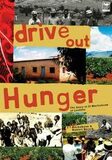
To this day, the Machobane Agricultural Development Foundation continues Dr. Machobane's work to increase food security and improve the quality of life in the villages of Lesotho.
( Woman watering crops in Lesotho. ©British Red Cross/Caroline Maxwell)
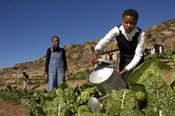 A Lesotho school garden supported by CARE.
A Lesotho school garden supported by CARE.
Photo ©2005 Brian Atkinson